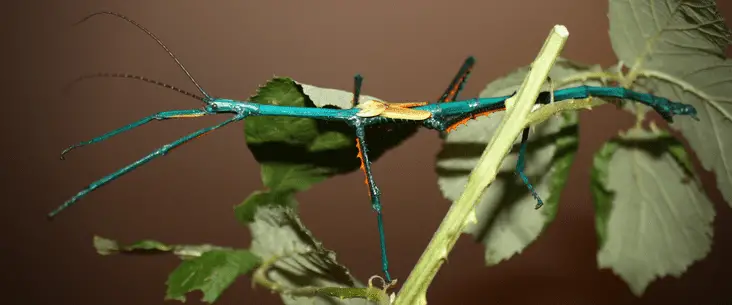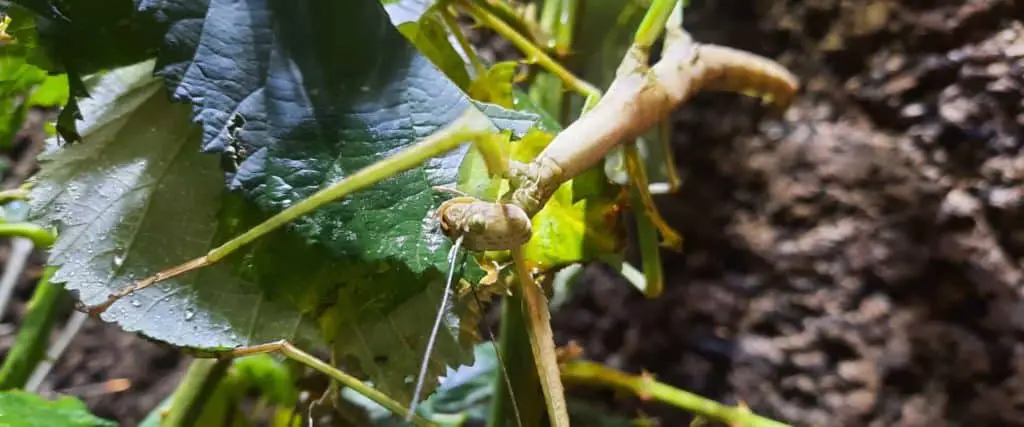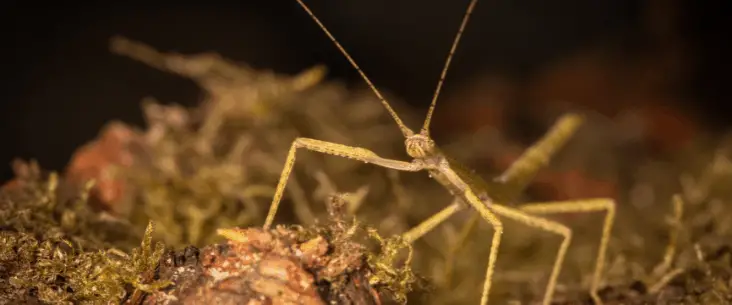You have bought or found the first eggs of your stick insect and wondering how long it takes before you see little nymph stick insects crawl in your enclosure. Because stick insects don’t have a very long lifespan and you want to keep enjoying the presence of your pet stick insects, it would be good to breed them yourself. But how long does it take before the eggs of stick insects hatch?
The incubation time before a stick insect egg hatch is usually around 3 to 5 months. However, how long it takes before your egg hatch depends on the species and is also influenced by temperature and humidity. It can even take up to 18 months for some species of stick insects.
You can see that incubation time can greatly vary between different stick insect species. In the table below, you can find the incubation time and egg-laying/reproduction method for most popular species of stick insects that are kept as pets.
| Species | PSG # | Egg laying method | Reproduction method | Incubation time |
|---|---|---|---|---|
| Indian stick insect | 1 | dropping eggs | parthenogenic | 2-3 months |
| Giant prickly stick insect | 9 | dropping eggs | sexual, parthenogenic | 4-12 months |
| Leaf insect | 278 | dropping eggs | sexual | 4-5 months |
| Giant leaf insect | 72 | dropping eggs | parthenogenic | 6-9 months |
| Jungle nymph | 18 | digging eggs | sexual | 12-14 months |
| Zompro’s stick insect | 224 | dropping eggs | sexual | 4-5 months |
| Pink wing stick insect | 4 | glueing eggs | parthenogenic | 4-5 months |
| Giant spiny stick insect | 23 | digging eggs | sexual | 4-6 months |
| Annam stick insect | 5 | dropping eggs | sexual, parthenogenic | 5-8 weeks |
| Thorny stick insect | 118 | digging eggs | sexual | 3-4 months |
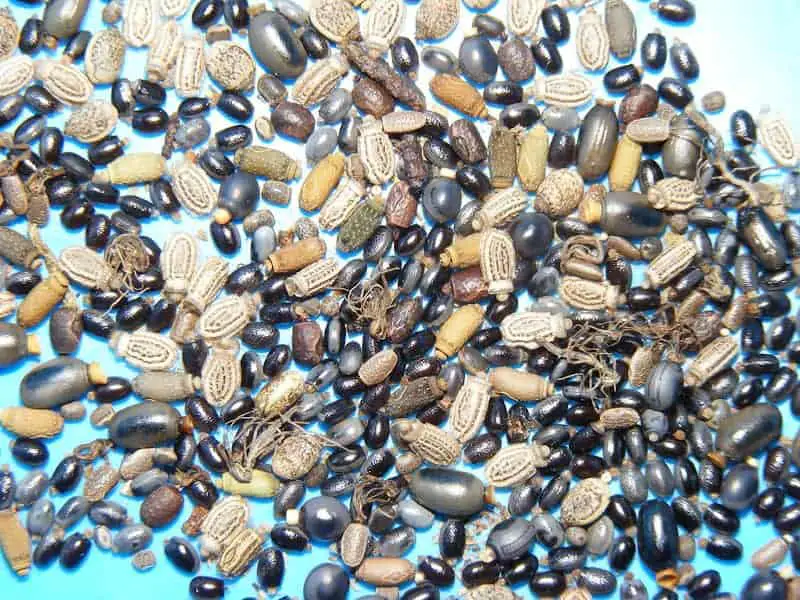
What influence the incubation time of stick insect eggs?
With chickens, you can exactly say when the eggs hatch. Actually, for most birds, they have generally a fixed incubation time. For stick insects, it works a bit different. Multiple factors influence the incubation time of stick insect eggs, and therefore it isn’t easy to pinpoint when the eggs hatch.
Species
The duration before the egg will hatch depends, obviously, by the species of stick insect. Indian stick insects (Carausius morosus), for example, have a relatively short incubation time, whereas Jungle Nymphs (Heteropteryx dilatata) have very long incubation time before the eggs start to hatch.
It seems like the size of the stick insect also matter, where generally large stick insects have longer incubation time, but this is not necessarily true for every species.
Temperature
Temperature is known to affect the development of the embryos in the egg. Every stick insect have an optimal temperature range to incubate the eggs, and often colder temperatures will slow down, or even temporary stop, the development of the embryos. Within the temperature range, the higher the temperature, the shorter the incubation time.
However, be careful with high temperatures, because when it is too high it negatively affects the development of the egg or even kills the embryo caused by overheating the eggs. Higher temperature also dries out the environment and, consequently, the egg quicker.
Humidity
Humidity is also affecting the incubation time. Every species of stick insects have an optimal humidity range where the eggs will thrive best. When you keep them too dry for that specific species, it will slow down the development of the embryo.
All stick insect eggs do favour a more or less humid environment for the eggs to develop, so by misting the incubation container once a while (often once or twice a week is sufficient) will certainly benefit the stick insect eggs.
Eggs from parthenogenic females
For some species, the females can reproduce parthenogenically. With other words, the females produce fertile eggs without the need of a male. Some species only exists of females within the captive population. These eggs will hatch as evenly good as eggs from females that have mated with a male.
However, it is known that in general eggs from parthenogenic females will have longer incubation time than females reproduced sexually. So keep in mind that when you breed with only females (if this works for the species), you need to be a little more patient.
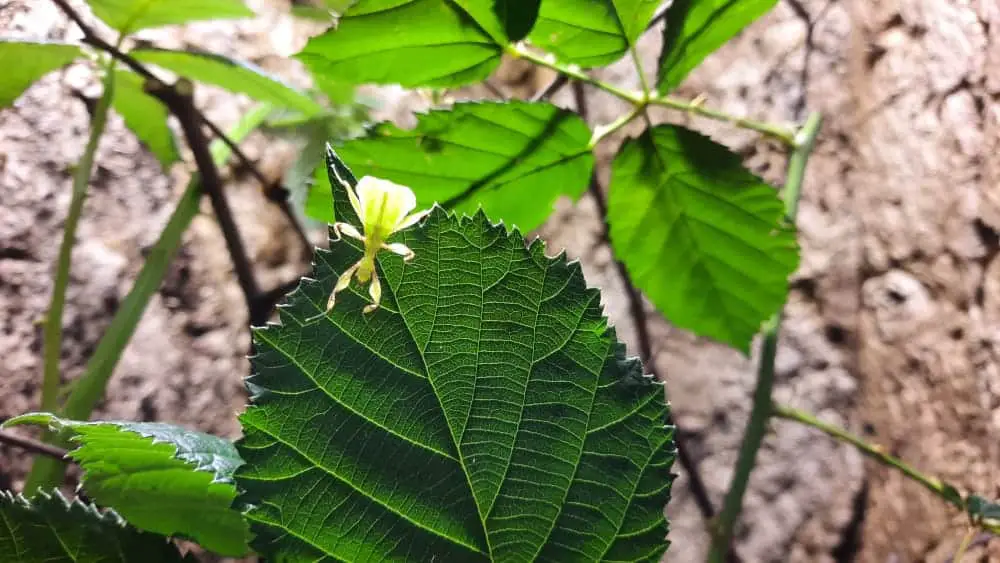
What influence hatching success?
When the incubation time has been past does not guarantee that the egg will hatch. The embryo, the stage of a nymph in the egg, must stay alive during the development in the egg. There are several factors that can cause the embryo to die. These factors influence the hatching success rate.
Health and condition during incubation
Like we discussed earlier, you need to keep the eggs in the optimal conditioned favoured by that particular species. Not only influence these factors the incubation time but it also positively influence the hatching success and embryo health.
When temperature and humidity are out of range, it will certainly affect the hatching result. Another important factor that will cause harm to your stick insect eggs is mould. Mould develops when the enclosure is very humid (≥ 75% RH), warm and poor ventilated. Mould is not only bad for stick insects, but also for you as the keeper.
Disturbances
Disturbances must be minimized in the room where you breed your stick insects. Disturbances to should be prevented are sound vibrations (music, heavy walking, other machines that make vibrations), and unregulated (bright) light.
Light and day-night cycle
Best would be that you have natural daylight in the room where you keep the eggs (and nymph and adults). If there is no natural light possible, you should consider providing artificial light. Although many stick insects do not need much light, you still need to provide some light in the room.
Always be careful with direct sunlight. Because of the enclosed containers we use to keep stick insect eggs, direct sunlight can quickly increase the temperature too far beyond limits.
It is known, at least for some species, that light and day-night cycle play a role of hatching stick insect eggs. Some eggs will hatch during daylight (often early in the morning), where others wait for dusk and night. This information also implies that light and light-cycles play a beneficial role in the development of embryos.
Overpopulation and size of incubation container
Consider that even the biggest enclosure you have is still very small compared to their natural situation. When keeping too many eggs in one enclosure, or using a very small enclosure for hatching your eggs, will quickly result in overpopulation.
Overpopulation will cause stress to the animals and can cause animals to chew on each other — also called behavioural cannibalism. Try not to place too many eggs in one enclosure to prevent overpopulation.
How do you know that the egg is fertile?
Well, the simple answer: you can’t. It is not possible to see if an egg is fertile on the outside of the egg. It is because of the thick shell, that protects them from the environment, that you can’t see if and what is inside of the egg.
However, when you have a female and male in your enclosure together, or when a female is parthenogenic, you can assume that when you find eggs, they will be fertile. Especially when you see a male mating with a female, you don’t have to worry that eggs won’t be fertile.
On the other end, when an egg is fertile does not mean it will always hatch, as we discussed in the previous section. You need to take good care for the eggs to increase the hatching success rate.
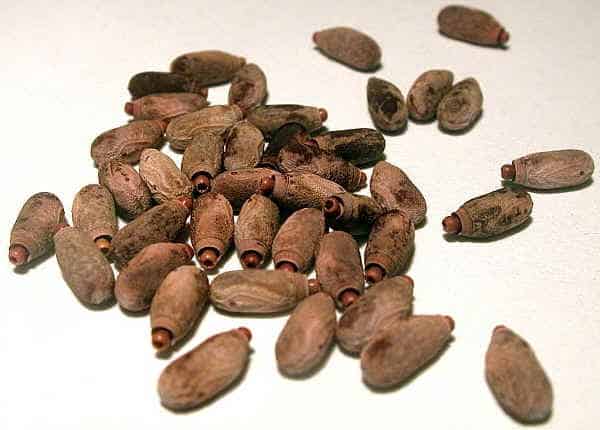
How to care for stick insect eggs?
So, proper care is a necessity to make hatching stick insect eggs more successful. The care of stick insect eggs exists of four key elements you should have a look for, as earlier discussed: Container size, temperature, humidity and egg substrate/medium.
Always check specific needs for the species you want to breed. Also, gather information about how they reproduce and lay eggs in nature. This information will always give clues on how to take the best care of your stick insect eggs and increase hatching success.
Want to know more?
Do want to know more about breeding stick insect eggs? Head over to the page about the ‘basics of breeding stick insects and leaf insects‘.
You can also read what you can do when a stick insect nymph is stuck on its egg.
Are you new to keeping stick insects or maybe want to keep stick insects in the future? Have a look at our page about how to care for your stick insects to get you started!
Share this page!

